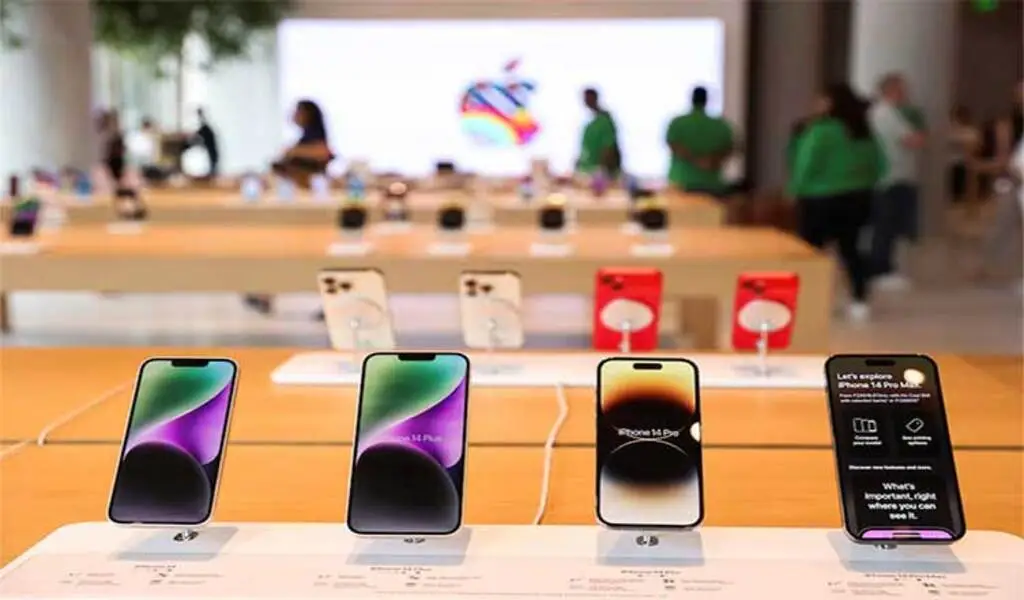Tech
Boeing Bids Farewell To An Icon, Delivers Last 747 Jumbo Jet

SEATTLE, Wash. — On Tuesday, Boeing said goodbye to an icon by delivering its final 747 jumbo jets in front of thousands of workers who helped build the planes over the past 55 years.
The giant yet graceful 747 has served as a cargo plane, a commercial aircraft capable of carrying nearly 500 passengers, a transport for NASA’s space shuttles, and the Air Force One presidential aircraft since its first flight in 1969. It transformed travel by connecting previously unconnected international cities and democratizing passenger flight.
However, over the last 15 years, Boeing and its European rival Airbus have introduced more profitable and fuel-efficient widebody planes with only two engines to maintain, as opposed to the 747′s four. The final plane is the 1,574th built by Boeing in Washington state’s Puget Sound region.
Thousands of workers joined Boeing and other industry executives from around the world — as well as actor and pilot John Travolta, who has flown 747s — Tuesday for a ceremony Boeing marking the delivery of the last 747 to cargo carrier Atlas Air at the company’s massive factory north of Seattle.
“If you love this business, you’ve been dreading this moment,” said Richard Aboulafia, a longtime aviation analyst. “Nobody wants a four-engine airliner anymore, but that doesn’t diminish the aircraft’s enormous contribution to the development of the industry or its remarkable legacy.”
More Than 50,000 Boeing Employees Worked On The Contract
After losing a massive military transport contract, the C-5A, Boeing set out to build the 747. The plan was to use the new engines developed for the transport — high-bypass turbofan engines that burned less fuel by passing air around the engine core, allowing for a longer flight range — for a newly imagined civilian aircraft.
More than 50,000 Boeing employees worked for less than 16 months to build the first 747, a Herculean effort that earned them the moniker “The Incredibles.” The construction of a massive factory in Everett, north of Seattle, required the construction of the world’s largest building by volume. The factory had yet to be finished when the first planes were completed.
Desi Evans, 92, was among those in attendance. He joined Boeing in 1957 at its factory in Renton, south of Seattle, and worked for the company for 38 years before retiring. His boss informed him in 1967 that he would join the 747 programs in Everett the following morning.
“They told me to wear rubber boots, a hard hat, and warm clothing because it’s a sea of mud,” Evans recalled. “And they were preparing for the factory’s construction.”
State Of The Art Technology
As a supervisor, he was in charge of figuring out how the passenger cabins would be put together. He also oversaw the crews that worked on sealing and painting the planes.
“It was an incredible time when that very first 747 rolled out,” he said as he stood in front of the last plane parked outside the factory. “You felt ecstatic as if you were making history. You’re a part of something big, and it’s still big even if this is the final installment.”
The plane’s fuselage measured 225 feet (68.5 meters), and the tail was as tall as a six-story building. The plane’s design included a second deck very important extending from the cockpit back over the first third of the plane, giving it a distinctive hump and inspiring a nickname, the Whale. The 747 was dubbed the “Queen of the Skies” in a more romantic sense.
Some airlines converted the second deck into a first-class cocktail lounge, and even the lower deck featured lounges or even a piano bar on occasion. One decommissioned 747, built-in 1976 for Singapore Airlines, has been converted into a 33-room hotel near Stockholm’s airport.
“It was the first big carrier, the first widebody, so it set a new standard for airlines to figure out what to do with it and how to fill it,” said Guillaume de Syon, an aviation Boeing and mobility expert at Pennsylvania’s Albright College. “It became the essence of mass air travel: You couldn’t fill it with people paying full price, so you need to lower prices to get people onboard. It contributed to the deregulation of air travel that occurred in the late 1970s.”
The first 747 entered service on Pan Am’s New York-London route in 1970, and its timing was terrible, according to Aboulafia. It debuted shortly before the 1973 oil crisis, during a recession that saw Boeing’s employment fall from 100,800 in 1967 to 38,690 in April 1971. The infamous “Boeing bust” was commemorated by a billboard near Seattle-Tacoma International Airport that read, “Will the last person leaving SEATTLE — Turn out the lights?”
Delta Was The Last To Use 747 For Flights
The 747-400 series, an updated model, arrived in the late 1980s and had much better timing, coinciding with the Asian economic boom of the early 1990s, according to Aboulafia. He remembered flying from Los Angeles to Hong Kong on a Cathay Pacific 747 as a twentysomething backpacker in 1991.
“Even people like me could travel to Asia,” Aboulafia explained. “Previously, you had to stop for fuel in Alaska or Hawaii, which was much more expensive. This was a no-brainer — and reasonably priced.”
Delta was the last U.S. airline to use the 747 for passenger flights, which ended in 2017, though some international carriers, including Lufthansa, continue to use it.
Carsten Spohr, CEO of Lufthansa, recalled flying in a 747 as a young exchange student and said that when he realized he’d be traveling to the West Coast of the United States for the event on Tuesday, there was only one way to go: first-class in the nose of a Lufthansa 747 from Frankfurt to San Francisco. He assured the audience that Lufthansa would continue to fly the 747 for many years.
“We just adore the airplane,” he explained.
Atlas Air ordered four 747-8 freighters early last year, with the final one decorated with an image of Joe Sutter, the engineer who oversaw the original design team for the 747, arriving on Tuesday. Atlas CEO John Dietrich referred to the 747 as the greatest air freighter, owing to its unique ability to load through the nose cone.
SOURCE – (AP)
Tech
iPhone 16 Design Details and New Features Revealed in Leak

(CTN News) – The design of the next iPhone 16 and iPhone 16 Pro has been revealed through mock leaks, prompting case makers to adjust accordingly.
Leaker Sonny Dickson shared an image on X that shows the iPhone 16 and iPhone 16 Pro Max in matching cases. Aside from the standard cutout in the cases’ bodies for the cameras, there is another weirdly placed cutout on their right flanks.
The Capture button, a supposed new feature of the iPhone 16s, allows users to focus and take images and videos without using on-screen controls in the Camera app.
The button is pressure-sensitive and requires a finger contract to function. As a result, cases cannot cover these buttons without rendering them unusable, thus the cutout.
The Capture button is expected to be located in the same location as the mmWave 5G antenna on existing devices. It’s likely that this cutout is solely for connectivity purposes, and that the reports concerning the Capture button are false.

Stay Updated on iPhone 16 Rumors
Furthermore, as commentators on Dickson’s article point out, the iPhone 16 lacks a visible flash, indicating that these cases are unlikely to be final products, even if they are otherwise accurate.
Another notable iPhone 16 difference evident in this dummy/case combo is the vertically placed cameras on the standard iPhone 16. This is likely to enable the phone to capture spatial video, similar to the Pro models, which can then be seen with an AR/VR headset like the Vision Pro.
Apple’s September launch window for iPhones is still a while off, but you can find all the rumors so far in our iPhone 16, iPhone 16 Pro, and iPhone 16 Pro Max hubs. And we will keep you updated until their expected announcement this fall.
Tech
GPT-5 Release Date: Everything you need to know about OpenAI’s Next Chatbot

There’s a rumor that OpenAI’s ChatGPT is getting more powerful.
Two experts who spoke to Business Insider say GPT-5, the new AI model, is expected to launch this summer. Some businesses have already tried out a demo of the tool and are pleased with its capabilities.
Using this technology, OpenAI aims to create artificial general intelligence (AGI), or systems that are more intelligent than humans.
According to this lofty, sci-fi premise, an AI can think for itself without human supervision, which can produce more AI models of its ilk without human intervention. A breakthrough of this magnitude may either destroy or enhance the world.
As the race to build the best artificial intelligence heats up, here is everything you need to know about GPT-5.
What is GPT-5?
GPT-5 is the successor to GPT-4, OpenAI’s fourth-generation chatbot for which a monthly fee is required.
As the name implies, GPT stands for generative pre-trained transformer, an AI engine developed and improved by OpenAI to power ChatGPT. Like the processor in a computer, each new release of the chatbot is based on a brand new GPT with enhanced capabilities.
This AI chatbot can offer human-like responses and can even recognize and generate images and speech. Its successor, GPT-5, is reportedly expected to offer better personalization, make fewer mistakes and handle more types of content, such as video.
It is also worth noting that other companies, such as Google and Meta, have released their GPTs under their names, collectively known as large language models.
These artificial intelligence systems are based on the human brain and can generate text responses to conversations.
Is GPT-5 being trained?
In the latest report, OpenAI claims to have begun training GPT-5 in preparation for its release in mid-this year. Once its training is complete, the system will undergo various safety tests.
This process will include a “red team” test in which internal and external testers will test the bot and provide feedback on its strengths and weaknesses.
Based on a recent tweet from an OpenAI representative, it has been speculated that GPT-5’s learning process has begun.
In January, a leading researcher at OpenAI hinted that the company was training on a much larger GPU than usual. The revelation followed a separate tweet detailing how OpenAI had expanded its computing capacity.
The GPU, or graphics processing unit, is like a calculator that helps an AI model connect various types of data, such as associating an image with a text-based description.
According to Mr Altman, his company worked on GPT-5 on at least two occasions last autumn.
According to two people who attended his former venture capital firm Y Combinator’s alumni reunion last September, Mr Altman spoke of GPT-5 and its successor, GPT-6, as superior to their predecessors.
The CTN News reported in November that OpenAI was working on GPT-5, although no release date was announced.
Reports have also claimed that OpenAI’s boss has devised an audacious plan to procure the large quantities of GPUs required to train larger AI models.
According to the Wall Street Journal, Altman wants to raise as much as $7 trillion with the help of a global network of investors, governments, and energy providers to overcome supply shortages hindering technological progress.
What can GPT-5 do?
OpenAI’s chief spoke at the World Governments Summit in Dubai in February, saying that ChatGPT-5 will be more intelligent than its predecessors.
Mr Altman explained that this is more important than it may appear since these models are generally applicable. “So if it is a little bit smarter, it will be a little bit better at everything.”
According to Mr Altman, GPT-5 will require more data to train on, hinting at its brain power. He indicated that the plan is to use publicly available data sets from the internet and large-scale proprietary data sets provided by organizations. The last would include long-form writings or conversations, whichever format they take.
As Altman stated on Bill Gates’ Unconfuse Me podcast in mid-January, the multimodality concept will be important in the future: “Speech in, speech out. Images, eventually video. People clearly want that. We can push that further, but maybe the most significant progress will be in the area of reasoning ability..”
As a result, GPT-4 is currently capable of reasoning in very limited ways. Also, it is not reliable. If you ask GPT-4 most questions 10,000 times, one is likely to be pretty good, but it does not always know which one, and you want to get the best answer of 10,000 each time, so an improvement in reliability is necessary..”
GPT-5 versus GPT-4
To beat GPT-4, it must surpass GPT-4 Turbo, the next-generation model OpenAI released to subscribers in November.
The company’s most advanced artificial intelligence chatbot has knowledge of world events up to April 2023, as opposed to 2021 for GPT-4; it can analyze even longer prompts of up to 128,000 tokens or roughly the length of a 300-page book; it is better at following instructions; and it is capable of switching between tools based on user request, such as the Dall-E 3 image generator and Bing search engine.
GPT-4 has been tested by OpenAI and several researchers on real-life exams and has been shown to have a decent chance of passing the difficult chartered financial analyst (CFA) exam.
On the 2020 USA Biology Olympiad semifinal exam, it scored in the 99th to 100th percentile, aced the SAT reading and writing section, and excelled in the bar exam.
When will GPT-5 be available?
OpenAI has not yet announced GPT-5.
Also, it is unclear whether this project was affected by the turmoil at OpenAI in late November. On November 17, Mr Altman was ousted by the company’s board of directors.
Mr. Altman returned to the helm along with a new board following a period of tumult reminiscent of the dueling viewpoints on the future of artificial intelligence after five days of tumult.
Some ChatGPT users previously claimed the bot was running on a new AI model called GPT-4.5 Turbo, but that was false.
Looking at OpenAI’s GPT release timeline, we can see that the gap between updates is shrinking. In June 2018, GPT-1 was released, followed by GPT-2 in February 2019 and GPT-3 in June 2020.
The current free version of ChatGPT (GPT 3.5) was released in December 2022, followed by GPT-4 three months later in March 2023. Several recent updates have also been released, including a “turbo” version.
Will OpenAI announce GPT-5 at its developer day conference in November, or will June be the magic month again?
Tech
AI Model Aitana Lopez “Racks Up” Over 300K Instagram Followers

Artificial intelligence (AI) is nearly ubiquitous, occupying video and audio environments. In recent years, the K-pop music industry has used deep-fake technology to create groups that resemble actual individuals. Now meet Aitana, Spain’s first AI model.
Eternity and Mave, virtual female groups developed using artificial intelligence, have blurred the barriers between entertainment and technology. Whether we like it or not, these accelerating and frightening shifts are here to stay.
AI has recently made influencers one of its goals. Aitana Lopez, a 25-year-old AI-powered influencer from Spain, is a pioneer in the field. Switching lanes to her Instagram, @fit_aitana will strike you with eerie realism, as her “virtual soul” has deliberately developed a personality that is exceptionally lifelike and resembles the presence of a real-life model.
Her Instagram account already has over 300,000 followers.
View this post on Instagram
Aitana, created by Ruben Cruz, the creator of AI modeling business The Clueless, is a an AI model.
According to Euronews, Cruz’s breakthrough idea was fueled by the agency’s struggle to form genuine business relationships with real-life influencers. “Many projects were put on hold due to problems beyond our control,” the Clueless creator stated.
The Clueless describes Aitana, who is 25 years old, as a “strong and determined woman, independent in her actions and generous in her willingness to help others”. The AI model is also described as a Scorpio with a passion for video games and a commitment to fitness. Her vibrantly crafted design highlights Aitana as a standout with a multifaceted personality.

Designers working on Aitana’s images at the agency.The Clueless Agency
The Clueless Agency describes the AI influencer with eye-catching pink hair as an outgoing persona with “complicated humour and self-centeredness.”
The AI-powered “gamer at heart and fitness lover” was born on December 11, 1998. Her Instagram photos depict a digitally produced universe that reinforces the notion that she is engaging in real-world activities.
Following her trendsetting debut, the AI agency unveiled her other virtual companion, The Clueless’ second AI model, Maia Lima.
Similar to the controversy and criticism surrounding K-pop’s experimental experimentation, the rise of AI influencers has pushed unrealistic beauty standards.
While it is possible to focus on current technological advancements, this side of the virtual story is not without concerns for the future.
-

 News5 months ago
News5 months agoDeath Toll From Flooding In Somalia Climbs To Nearly 100
-

 Business5 months ago
Business5 months agoGoogle Will Start Deleting ‘Inactive’ Accounts In December. Here’s What You Need To Know
-

 Entertainment5 months ago
Entertainment5 months agoMerriam-Webster’s 2023 Word Of The Year Is ‘Authentic’
-

 Sports5 months ago
Sports5 months agoPanthers Fire Frank Reich In His First Season With Team Off To NFL-Worst 1-10 Record
-

 Celebrity5 months ago
Celebrity5 months agoElon Musk Visits Destroyed Kibbutz and Meets Netanyahu in Wake of Antisemitic Post
-

 Celebrity5 months ago
Celebrity5 months agoShane MacGowan, Lead Singer Of The Pogues And A Laureate Of Booze And Beauty, Dies At Age 65







































